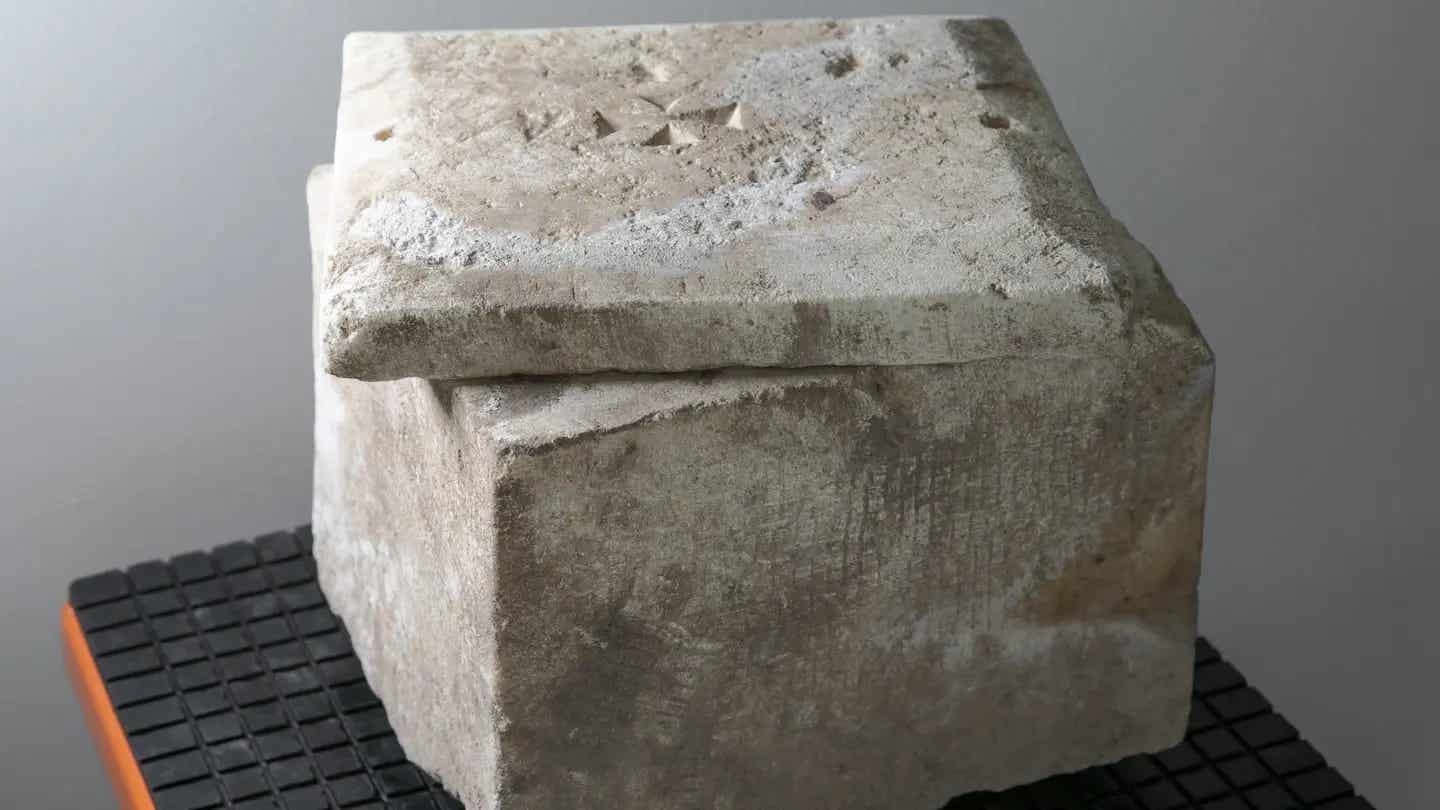1,500 year-old ivory box connected to Moses and the Ten Commandments
The shrine, discovered under an altar in a chapel at the summit of Burgbichl hill in Irschen, Austria, contained a 1,500-year-old ivory box adorned with Christian motifs.

Archaeologists from the University of Innsbruck have been carrying out excavations in Irschen, which is a part of the Carinthian Drava Valley. (CREDIT: University of Innsbruck)
Archaeologists excavating a church site have made a significant discovery: a marble shrine that may be linked to the biblical event of Moses receiving the Ten Commandments.
The shrine, found under an altar in a chapel at the summit of Burgbichl hill in Irschen, Austria, contained a 1,500-year-old ivory box adorned with Christian motifs. This remarkable find was announced by the team from Innsbruck University, which has been conducting excavations in Irschen since 2016.
"We know of around 40 ivory boxes of this kind worldwide," stated Gerald Grabherr, the lead archaeologist. "The last time one was found during excavations was about 100 years ago. The few pyxes that exist are either preserved in cathedral treasures or exhibited in museums."
The motifs on the box are particularly intriguing. One depicts a man turning his head with a hand descending from the sky, placing something between his arms, followed by scenes of biblical figures.
"This is the typical depiction of the handing over of the laws to Moses on Mount Sinai, the beginning of the covenant between God and man from the Old Testament," explained Grabherr.
Another motif shows a man in a chariot pulled by two horses, with the same hand from the sky lifting him into heaven. "We assume this is a depiction of the ascension of Christ, the fulfillment of the covenant with God.
Related Stories
The depiction of scenes from the Old Testament alongside those from the New Testament is typical of late antiquity. However, the depiction of the Ascension of Christ with a two-horse chariot is very special and previously unknown," Grabherr noted.
The excavation has also unearthed two Christian churches, a cistern, and various personal belongings of the settlement's former inhabitants. Grabherr mentioned that towards the end of the Roman Empire, when times were more uncertain, settlers chose to live on easily defensible hilltops rather than in the valley.
Further investigations are being conducted into the origin of the ivory, as well as the metallic and wooden components found in the marble box. "The archaeological and art-historical significance of the pyx cannot be denied," Grabherr concluded.
Other notable reliquary boxes from antiquity
Ivory reliquary boxes, known as pyxes, are rare artifacts from early Christian history, typically used to hold sacred items such as relics of saints or consecrated Eucharistic bread. Approximately 40 such ivory boxes are known worldwide, each with its own unique history and significance. Here are some notable examples:
Pyxis of Zamora
- Origin and Date: Crafted in 964 CE during the Caliphate of Córdoba.
- Discovery Location: Currently housed in the National Archaeological Museum in Madrid, Spain.
- Description and Significance: This cylindrical ivory box was commissioned by Caliph al-Hakam II for his concubine, Subh. It features intricate carvings and an Arabic inscription detailing its creation and dedication. The pyxis likely served as a container for cosmetics, jewelry, or perfume, reflecting the sophistication of the ruling class during that period.
Leyre Casket
- Origin and Date: Produced in 1004/5 CE in the Caliphate of Córdoba.
- Discovery Location: Originally housed in the Monastery of Leyre, it is now in the Museo de Navarra in Pamplona, Spain.
- Description and Significance: This rectangular ivory casket, adorned with detailed carvings of courtly scenes and inscriptions, was created for ʿAbd al-Malik al-Muẓaffar, a political and military leader of the caliphate. It was later repurposed as a reliquary to hold the remains of Saints Nunilo and Alodia.
Pyxis of Čierne Kľačany
- Origin and Date: Believed to have been made in the 4th century and later brought to the region in the late 9th century.
- Discovery Location: Unearthed in 1974 near the village of Čierne Kľačany in Slovakia.
- Description and Significance: This oval-shaped ivory box depicts scenes of daily life, including farming and animal breeding, as well as the legend of the founding of Rome. It is thought to have been a gift to the ruler Rastislav of Moravia, possibly brought during the times of Saints Cyril and Methodius.
Brescia Casket
- Origin and Date: Created in the late 4th century, likely in Milan, Italy.
- Discovery Location: Currently preserved in the Museo di Santa Giulia in Brescia, Italy.
- Description and Significance: This ivory box is adorned with 36 scenes depicting a wide range of early Christian imagery. Its complex iconography has been the subject of extensive scholarly discussion, highlighting its importance in the study of early Christian art.
These artifacts provide valuable insights into the religious and cultural practices of their respective periods, underscoring the significance of ivory pyxes in early Christian history.
Note: Materials provided above by The Brighter Side of News. Content may be edited for style and length.
Like these kind of feel good stories? Get The Brighter Side of News' newsletter.
Joseph Shavit
Head Science News Writer | Communicating Innovation & Discovery
Based in Los Angeles, Joseph Shavit is an accomplished science journalist, head science news writer and co-founder at The Brighter Side of News, where he translates cutting-edge discoveries into compelling stories for a broad audience. With a strong background spanning science, business, product management, media leadership, and entrepreneurship, Joseph brings a unique perspective to science communication. His expertise allows him to uncover the intersection of technological advancements and market potential, shedding light on how groundbreaking research evolves into transformative products and industries.



